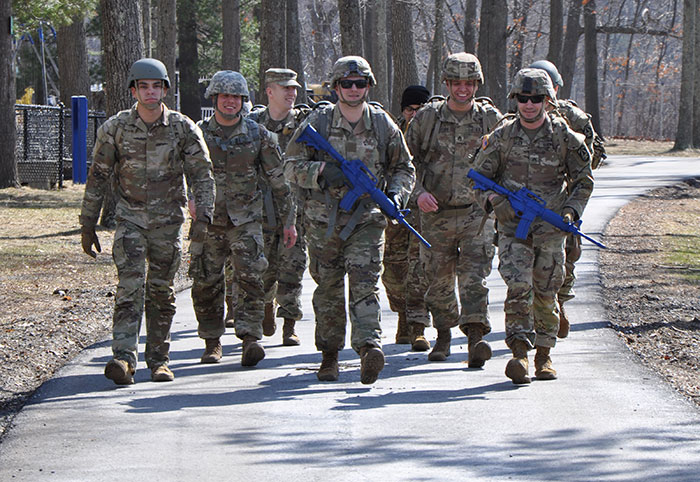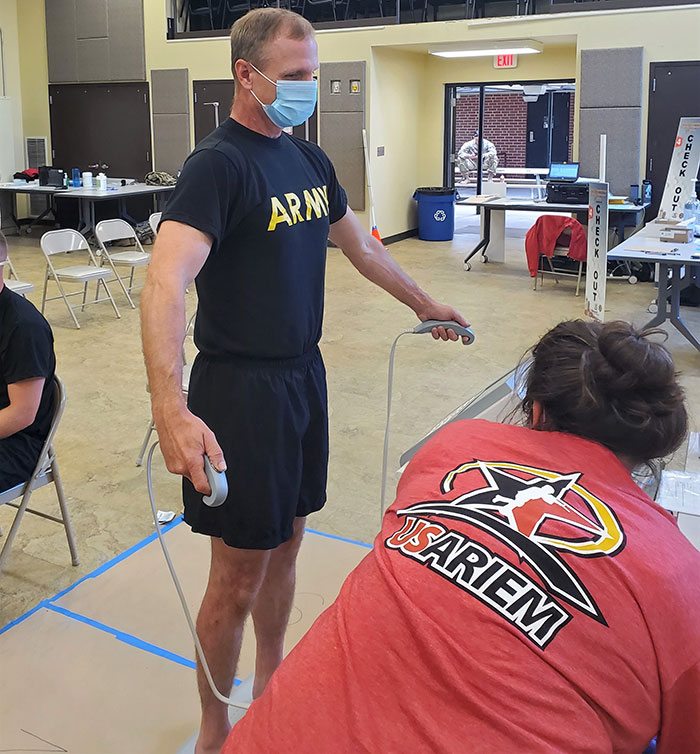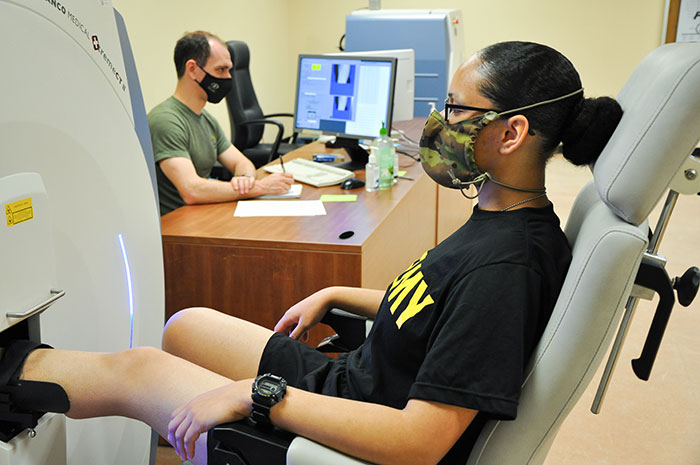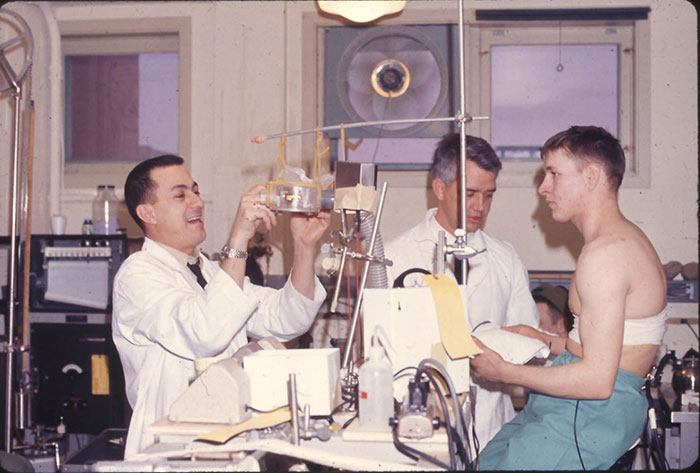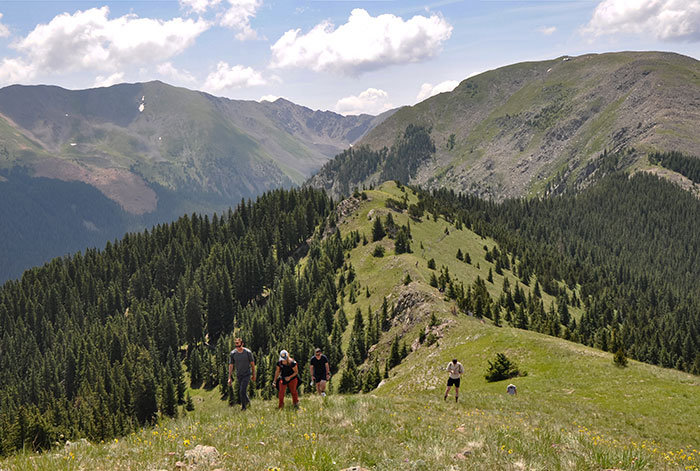Welcome to the Science Behind the Warfighter
Who We Are
Welcome. The U.S. Army Research Institute of Environmental Medicine, or USARIEM as we like to call it, is happy to introduce our new blog, "The Science Behind the Warfighter." In a nutshell, that's what we do – scientific research to optimize Warfighter health and performance. Stick with us to learn what that means, what we do and how and why we do it.
USARIEM is a subordinate command of the U.S. Army Medical Research and Development Command, under the Army Futures Command, and is co-located at the Natick Soldier Systems Center, an Army garrison in Natick, Massachusetts.
Why We Research
Simply…We do it for the Warfighter.
Being a Warfighter is a tough job. Some careers have similar requirements, but nothing is quite like being a Warfighter.
For starters…Warfighters are held to high fitness standards. Training, exercise and nutrition are part of the job. At USARIEM, it's our job to make sure we understand the Warfighter's body to prepare them with the tools and knowledge they need to be healthy, strong and fit.
For the most part, Warfighters do not have a set office environment – they set up office wherever they are needed, in whatever conditions are present. That could be in the unforgiving heat of the desert. The frigid cold of the Arctic. In the mountains at high altitudes. In wetlands. Forests. Cities. On land, at sea or in the air. Our research team studies our Warfighters in these environments to develop tools and products to ensure their health, safety and readiness.
Warfighters don't punch a time clock. Office hours are whenever they are needed, 24 hours a day/seven days a week. Overtime and night shifts are part of the job, especially when training or deployed. We learn how these deployment conditions affect the human body physically and mentally. Then, we develop innovative, practical solutions that help Warfighters accomplish their missions.
The dress code is the standard military uniform with gear to meet the needs of their "office" conditions. Their standard kit often includes a heavy rucksack packed with essential gear and equipment to complete the mission. Our researchers look at the uniforms and equipment, the impact on the body and how the Warfighter's clothing and gear can be better, smarter, safer and even more intuitive.
In addition, Warfighters can also face sleep deprivation, bone and muscle injuries, undernutrition, cognitive fatigue and other obstacles because of the job. If those issues are not addressed, they can jeopardize lives and missions. We research and develop the tools and knowledge to mitigate these risks.
Many do not realize what Warfighters experience every day. This is precisely why the Department of Defense has scientists who specifically study Warfighters' health and performance. That's where we come in.
Our researchers look at what happens inside a Warfighter's body when training and operating in those environments and conditions. Our job is to find out how to improve health and performance, prevent injuries and ensure that Warfighters can do their jobs and return home safely.
What We Research
In 1961, USARIEM was established as a research laboratory under the U.S. Army Medical Research and Development Command. USARIEM, internationally recognized as the DOD's premier laboratory for Warfighter health and performance research, focuses on environmental medicine, physiology, physical and cognitive performance and nutrition research.
We learn from past and present conflicts while anticipating future requirements.
Battlefields and training conditions are ever-changing, creating new questions for our researchers to answer about Warfighter health and performance.
We start with basic research to expand our knowledge and answer questions about 'why,' 'what' and 'how.' We then move on to applied research to answer specific questions and solve practical problems. From start to finish, our research supports Warfighter readiness — to deploy, fight and win anytime and anywhere successfully.
Some of the things we are researching include:
- What do Warfighters need to eat to complete their missions?
- How can we help Warfighters' bones and muscles get stronger when training?
- Who is more likely to get injured, and how can the U.S. Military prevent this?
- How can we improve food, clothing and equipment for extreme environments?
- How can we predict and prevent injuries in the heat, cold and high altitudes?
- How can we improve Warfighters' learning and decision-making abilities?
- What qualities make a great Warfighter, and how can others safely get to that level?
Meet the Team
We have a small workforce — over 200 civilians, Soldiers and research fellows — who have comprehensive military experience and expertise in various scientific fields. In the spotlight, we have:
- Physiologists
- Engineers
- Dietitians
- Exercise scientists
- Technicians, experts
- And professionals with real-world experience
Meanwhile, our Research Support Division uses their talents behind the scenes to ensure we can continue to conduct studies safely and efficiently. USARIEM has three research divisions—Military Nutrition, Military Performance and Thermal and Mountain Medicine—and several support divisions working together to accomplish our mission.
The Research Divisions
The Military Nutrition Division conducts research that provides the biomedical science basis for developing new rations, menus, policies and programs that enable Warfighter health and performance. MND evaluates Warfighter nutritional status and examines interactions between nutrition, health, performance and the operational environment.
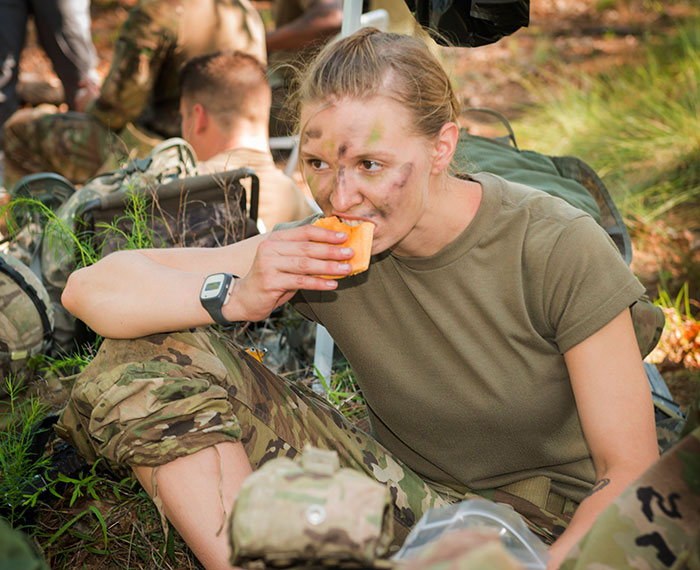
The Military Performance Division conducts research to characterize, improve, and optimize Warfighter performance of military tasks and missions. Their science focuses on preventing or mitigating performance decrements due to military-relevant threats, such as musculoskeletal injuries, physical overload, occupational operational stressors and exposures. MPD research provides solutions that increase Warfighter readiness and deployability.
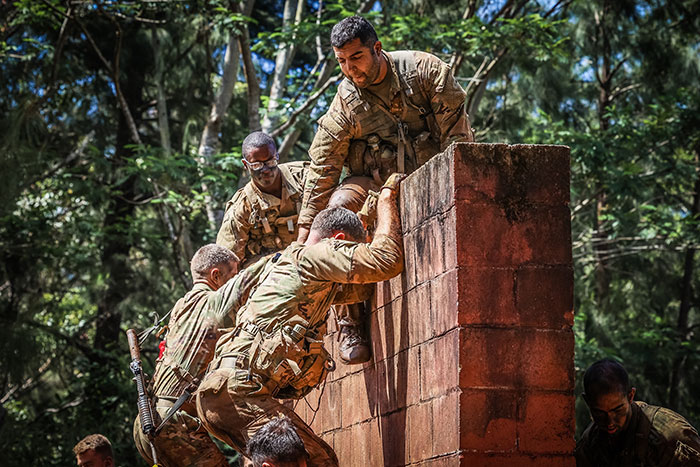
The Thermal & Mountain Medicine Division researches ways to optimize and enhance physical and cognitive performance and prevent illness associated with military operations at environmental extremes, including hot, cold, high terrestrial altitude, and subterranean environments. TMMD research supports physiological modeling and military materiel developers of clothing, equipment, food and pharmaceuticals.
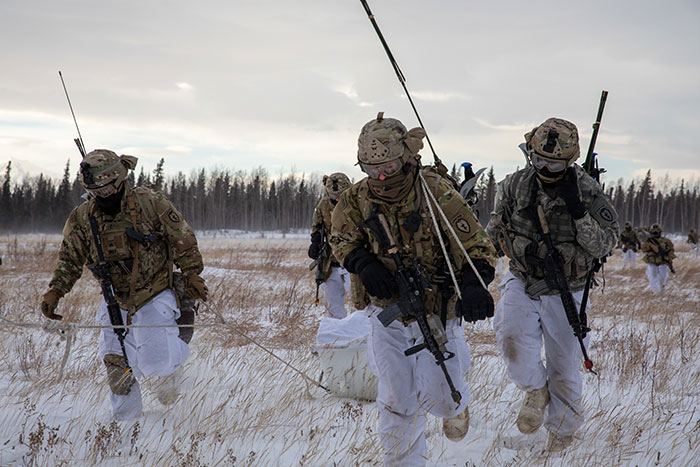
How We Research
Like our Warfighters, our research teams are not limited to conducting studies in the lab. We are often in the field with Warfighters throughout every step of their careers. We're with recruits as they complete Basic Combat Training, with active-duty Warfighters during real-world training scenarios, and with Veterans after they retire from their time in service.
We conduct field studies in stations worldwide — post, camp, base, station. You name it, we are there.
Our researchers have conducted cold studies in Norway; heat illness studies with Marine recruits in Parris Island, South Carolina; bone injury studies in Fort Sill, Oklahoma; and high-altitude studies in Taos Ski Valley, New Mexico, at over 12,000 feet above sea level.
However, when Warfighters operate and train in extreme conditions, there are times when we can't be there to collect data. That's when we take the field conditions to our lab in Natick. We have facilities that can replicate those extreme conditions Warfighters experience on the job. We can study how their bodies are reacting in these controlled lab environments. These facilities include:
- A hypobaric chamber that can simulate altitudes as high as Mount Everest
- A bone health lab with advanced X-ray equipment to examine bones at the cellular level
- Environmental chambers that switch between humid tropics and the frigid Arctic at the press of a button
- Thermal manikins used to test the thermal properties of clothing — oh and the manikins can sweat like us humans
- A weapon simulator, the EST 2000, which allows researchers to study the effects of sleep deprivation on marksmanship and cognitive performance
- An exercise lab, where we perform most of our nutrition studies
Partnering Up
We complete our mission by leveraging our global partnerships with industry, academia and other government agencies. We collaborate with scientists in diverse fields worldwide to deliver solutions to the Warfighter.
With only a 30-minute drive to Boston (or as we call it, Beantown), we collaborate with some of the country's leading hospitals, universities and industries. We have ongoing partnerships with many of these organizations.
We proudly partner with other government agencies and Services to accomplish all of our missions. Competition between the Services may be fierce on the athletic fields and unit pride. Still, when push comes to shove, we are one team – Soldiers, Sailors, Marines and Airmen – our research benefits all Warfighters.
What Comes After Research
All of this research is great, but what becomes of it?Primarily, our research gets into the Warfighter's hands. Our science affects the Warfighter every day. The clothing they wear, the food they eat and the military-relevant guidance they follow in extreme environments have been developed based on USARIEM's research.
Supporting product development is only one thing we do. We also produce leader decision aids, performance optimization doctrine, medical doctrine, predictive algorithms, and Health Hazard Assessments. Our team has also been instrumental in developing many products, models and guidelines for the Warfighter, including:
- Occupational Physical Assessment Test - A criterion-based test developed for the Training and Doctrine Command to reduce injuries and attrition during training. The OPAT rolled out Army-wide in 2017.
- Performance Readiness Bar - A fortified snack bar developed to optimize bone health during Initial Military Training. The PRB has been offered to recruits in all Basic Training Schools since January 2018.
- Leader Decision and Planning Aids - Mission planning tools help leaders plan missions in multiple domains, including hot, cold and high-altitude environments. USARIEM has developed these user-friendly solutions based on years of data.
Our research doesn't just benefit Warfighters. While we develop everything with the Warfighter in mind, our research benefits both Warfighters and Civilians. Our findings and solutions help families, athletes, first responders and the public.
We know it's a lot to unpack. That's why we created this blog, "Science behind the Warfighter." Follow us here to learn more about what we are doing, the science behind it and, most importantly, why we do what we do.














